On February 10th, around 14:30 local time, a Learjet private jet aircraft crashed into another private jet after landing at Scottsdale Airport (SCF) in Arizona. Unfortunately, officials confirmed that there is one fatality due to the accident, while three others were hospitalized and one still stuck inside the Learjet.
The Learjet 35A involved, registered as N81VN, was manufactured in 1989 which means that it was at least 35 years old at the time of the accident. The aircraft was owned by a company formed in Wyoming and located at Franklin, Tennessee. This company is in fact owned by Vince Neil, a member of the heavy metal band Mötley Crüe. The private jet took off from Austin-Bergstrom International Airport (AUS).
The jet arrived at Scottsdale at around 14:30. As the Learjet landed, it skid off the runway and crashed into a parked private jet. The parked jet, a Gulfstream 200 registered as N199DF, was reportedly not occupied during the crash.
Rescue operations started right away, and officials stated that at least one fatality was confirmed as the result of the crash. It is currently unknown who the deceased is. A spokesperson for Neil has stated to a news source that Neil “...was NOT on the plane that crashed in Scottsdale, although it was his plane”. Neil's lawyer stated to a news source that “Mr. Neil’s thoughts and prayers go out to everyone involved, and he is grateful for the critical aid of all first responders assisting today”.
According to news sources, Vince Neil's girlfriend Rain Andreani and her friend Ashley was onboard with multiple pet dogs. Rain survived but suffered 5 broken ribs, while her friend and the dogs also survived. Both women are now at the hospital receiving treatment for their injuries.
After the accident, Scottsdale Airport closed to traffic and operations are currently suspended. Flights to and from the airport have all been diverted, canceled or severely delayed.
UPDATE: Scottsdale Fire Department Captain Dave Folio said the trapped passenger was freed but in critical condition. The passenger was transported to a trauma center. He also added that the runway would remain closed for “the foreseeable future”.
""" },{ "title":"Seattle Plane Strike 2025: Japan Airlines and Delta Collision Raises Safety Concerns", "blurb":"Seattle-Tacoma International Airport saw a concerning incident on Wednesday morning when a Japan Airlines (JAL) plane clipped a parked Delta Air Lines jet while taxiing. Thankfully, no one was injured, but passengers described the collision as a frightening experience.", "author":"Mohsin Hassan", "publishDate":"02/06/2025", "cover":"delta-japan%20strike%202.webp", "views":2087, "bodyHTML":"""Seattle-Tacoma International Airport saw a concerning incident on Wednesday morning when a Japan Airlines (JAL) plane clipped a parked Delta Air Lines jet while taxiing. Thankfully, no one was injured, but passengers described the collision as a frightening experience.
The accident occurred around 10:15 a.m. when JAL Flight 68, a Boeing 787-9 Dreamliner arriving from Tokyo, was taxiing after landing. Its right wingtip struck the tail of a Delta Boeing 737, waiting in line for de-icing before departing for Puerto Vallarta, Mexico. Photos from the scene showed the JAL wing lodged into the tail of the Delta aircraft.
Passengers aboard the Delta flight felt a sudden jolt and heard a loud crunching noise. One traveler, Jackie Patton, said, "The plane shook violently. It was obvious right away that something was wrong." Authorities responded quickly, ensuring all passengers disembarked safely.
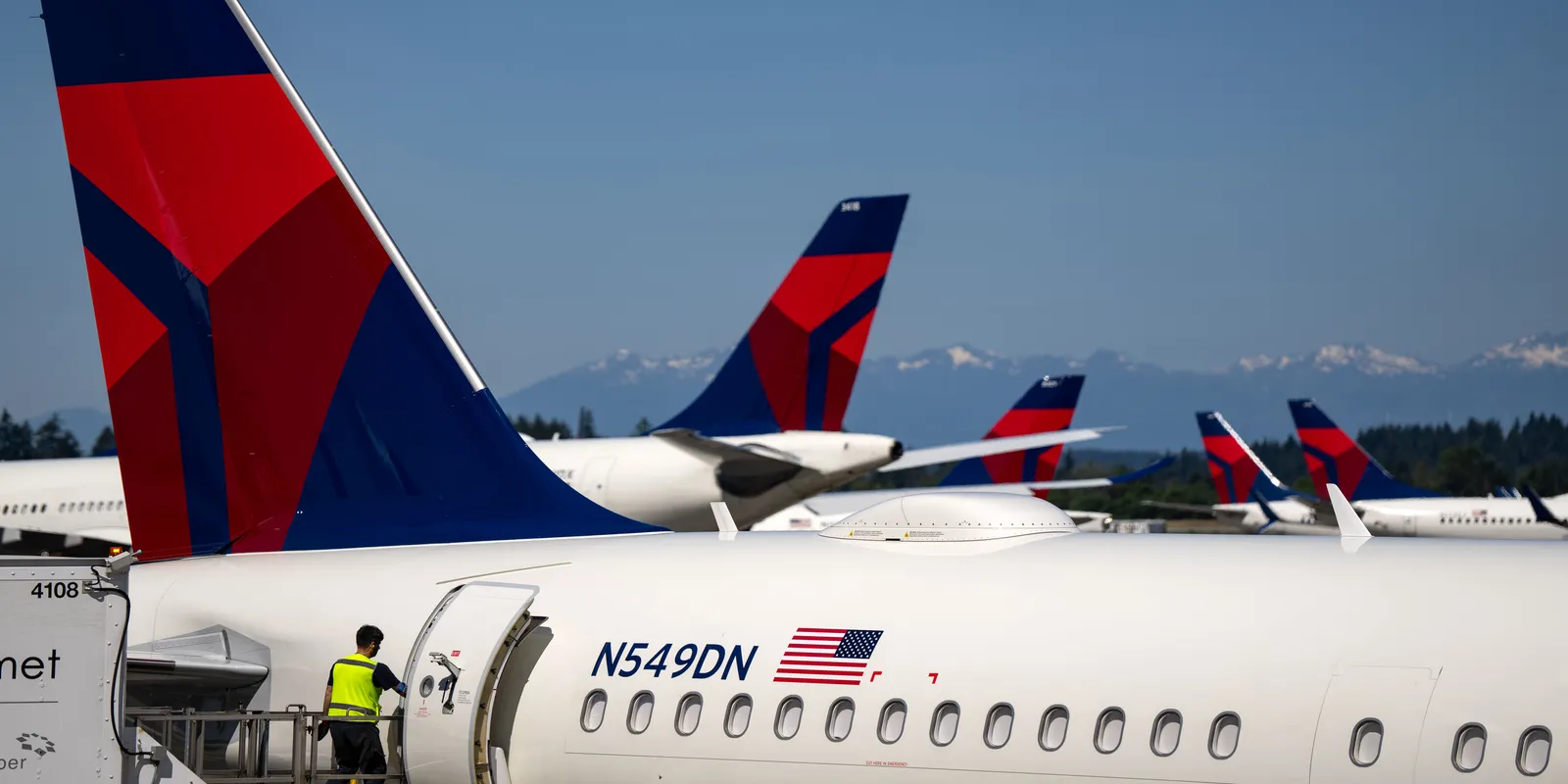
The Federal Aviation Administration (FAA) confirmed that the collision happened outside air traffic control jurisdiction. An investigation is underway to determine how the two planes came into contact. Both airlines apologized for the disruption, and Delta arranged for another aircraft to transport its affected passengers.
While this incident did not cause injuries, it comes when aviation safety is under scrutiny following recent air disasters. Just last week, an American Airlines jet collided midair with a U.S. Army helicopter near Washington, D.C., resulting in 67 fatalities.
Additionally, a medical transport plane crashed in Philadelphia, killing six people onboard and one person on the ground.

These events highlight the importance of strict safety measures on the ground and in the air. Though aviation remains one of the safest modes of transport, incidents like these remind the industry of the constant need for vigilance.
At Seattle-Tacoma Airport, operations were only briefly affected, but passengers were left shaken. "It was very scary," Patton added. "I never expected two planes to get so close."
The FAA and airport authorities are now reviewing procedures to prevent such incidents in the future. As investigations continue, experts emphasize that ground safety is as critical as in-flight security, ensuring that even minor mishaps do not escalate into major accidents.
""" },{ "title":"Ethiopian Airlines Expands Cargo Fleet with New Boeing 777 Freighter ", "blurb":"Ethiopian Airlines has expanded its cargo fleet with a brand-new Boeing 777 Freighter, registered as ET-BAB (MSN 68140). The aircraft was delivered directly from Boeing’s factory in Everett, Washington, USA, and landed at Addis Ababa Bole International Airport at 3:41 PM (GMT+3) on Wednesday, January 22, 2025. ", "author":"Victor Odhiambo", "publishDate":"02/05/2025", "cover":"TEB-O1EyTMUbCrZzGrVICbCE.jpg", "views":2173, "bodyHTML":"""
Ethiopian Airlines has expanded its cargo fleet with a brand-new Boeing 777 Freighter, registered as ET-BAB (MSN 68140). The aircraft was delivered directly from Boeing’s factory in Everett, Washington, USA, and landed at Addis Ababa Bole International Airport at 3:41 PM (GMT+3) on Wednesday, January 22, 2025. Demonstrating its commitment to social responsibility, the airline used the delivery flight to transport humanitarian aid.
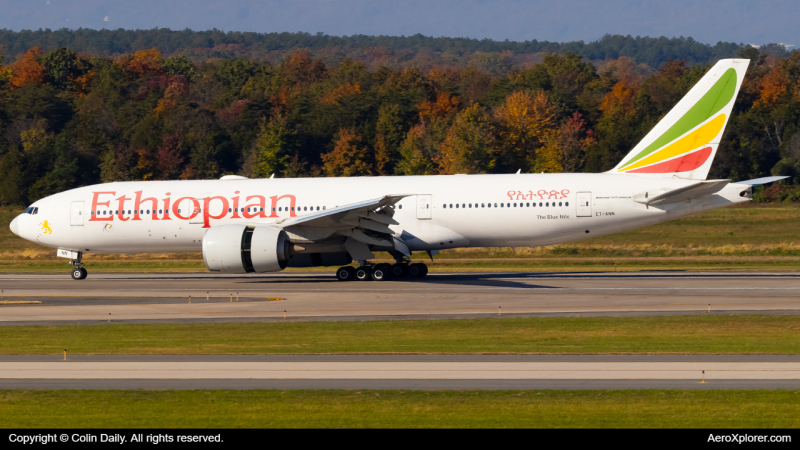
“This significant milestone reinforces our capacity to serve global markets with increased efficiency and reliability, enabling us to meet the growing demand for air freight services worldwide. The new freighter will play a vital role in strengthening our extensive network and providing unmatched service to our customers,” the airline stated.
With the arrival of this aircraft, Ethiopian Airlines’ fleet now includes 11 Boeing 777 Freighters, with three additional units on order. The airline's cargo division also operates four Boeing 737-800 Freighters, three locally converted Boeing 767-300 BDSFs, and two leased Boeing 767 Freighters from Air Canada, which were added to the fleet just last month.
Notably, in March 2022, Ethiopian Airlines and Boeing signed a Memorandum of Understanding (MoU) for the future acquisition of five Boeing 777-8 Freighters, the industry’s latest twin-engine freighter that is currently under development and renowned for its advanced capabilities and fuel efficiency.
In a strategic move to enhance its cargo operations, Ethiopian Airlines partnered with Israel Aerospace Industries (IAI) in 2021 to establish a Boeing 767-300ER freighter conversion line at its Maintenance, Repair, and Overhaul (MRO) facility in Addis Ababa. By September 2022, the airline had also signed a lease agreement with Titan Aviation for three converted Boeing 767-300ER freighters. (link: https://www.aircargonews.net/ethiopian-airlines-adds-to-freighter-fleet/1065989.article)
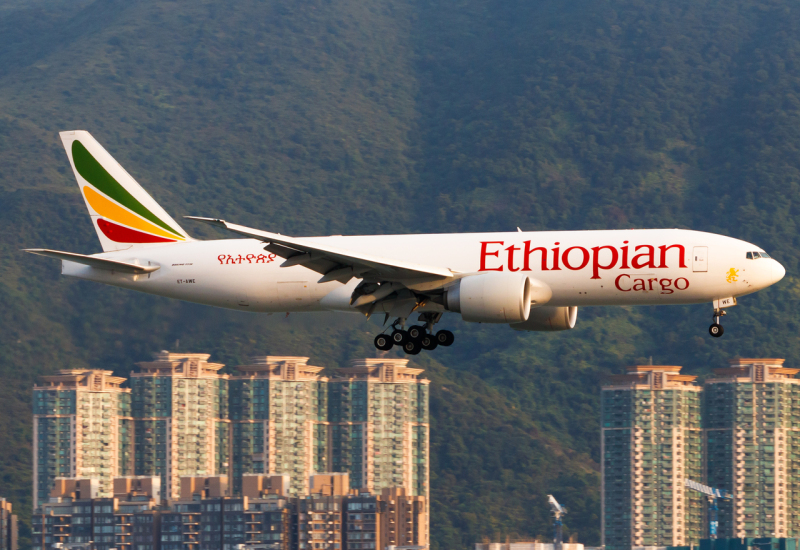
These investments and fleet expansions underscore Ethiopian Airlines’ dominant position in both the passenger and cargo transport sectors. With a diverse and modern fleet of over 135 aircraft, the airline continues to strengthen its role as Africa’s leading aviation powerhouse, meeting the increasing demands of the global market and solidifying its status on the world stage.
Ethiopian Airlines serves 70 dedicated cargo destinations and more than 140 passenger destinations spanning Africa, the Middle East, Asia, Europe, and the Americas. Through Ethiopian Cargo, the airline provides specialized services for general freight and special cargo, including horticultural products, pharmaceuticals, valuables, live animals, and e-commerce.
The airline has also achieved significant recognition for its pharmaceutical logistics capabilities. On January 17, 2025, Ethiopian Airlines announced the recertification of its IATA CEIV Pharma (Center of Excellence for Independent Validators in Pharmaceutical Logistics) accreditation, both as an airline and ground handling agent. The airline first achieved this milestone in 2022, underscoring its dedication to maintaining world-class standards in pharmaceutical transportation.
""" },{ "title":"Jeju Air To Cut 1000 Flights By March", "blurb":"In the aftermath of the recent tragedy in Korea, Jeju Air announced that they would cut many flights by March. This includes all flights to and from Muan International Airport, where the accident occurred, as the airline will pull all their operations from the airport. ", "author":"Sanghyun Kim", "publishDate":"02/05/2025", "cover":"Screenshot%202025-02-05%20132108.jpg", "views":729, "bodyHTML":"""
In the aftermath of the recent tragedy in Korea, Jeju Air announced that they would cut many flights by March. This includes all flights to and from Muan International Airport, where the accident occurred, as the airline will pull all their operations from the airport.
On January 3rd, Jeju Air held its usual press conference and incident briefing regarding the crash of Flight 2216 at the Mayfield Hotel in Seoul. As part of the measures taken to ensure safe operations, the airline announced that "1900 flights will be cut, and is being processed with the aviation ministry". The lessened operations will start on January 6th to March 29th, when the winter season schedule ends.
The first routes to be cut include 838 flights on 4 domestic routes, along with 278 flights on 5 international routes that originate in Muan, totaling 1116 flights. Particularly, all flights to and from Muan between Jeju, Nagasaki, Bangkok, Kota Kinabalu, Taipei, and Zhangjiajie are all canceled.
Flights between Jeju and Gimpo (Seoul), Cheongju and Busan are also being cut. The other ~800 flights are being discussed with the Ministry of Land, Infrastructure and Transport, to be announced next week.
Meanwhile, Jeju Air had made around $177M in revenue from selling tickets in the 3rd Quater last year. Jeju Air currently has $95M in cash assets. The airline also had around 33,000 domestic flights and 34,000 international flights canceled in a period just between December 29th and 13:00 of December 30th.
During the press conference, a reporter asked about the negative performance impacts due to the reduction in flight operations. Song Gyung Hoon, Chief Financial Support Officer of Jeju Air replied that "performance stats are not something to be currently considered". He added that "ensuring operational safety is the priority for now".
""" },{ "title":"Air Madagascar Sells Two Airbus A340-300s To Chinese Buyer for $2 Million", "blurb":"Air Madagascar has sold its two Airbus A340-300 aircraft for $2 million (€1.93 million) to a Chinese buyer, according to a report by Midi-Madagascar on January 30, 2025.", "author":"Victor Odhiambo", "publishDate":"02/05/2025", "cover":"Airbus_A340-300_-_Air_Madagascar.jpg", "views":1052, "bodyHTML":"""Air Madagascar has sold its two Airbus A340-300 aircraft for $2 million (€1.93 million) to a Chinese buyer, according to a report by Midi-Madagascar on January 30, 2025.
The sale, initiated in March 2024, was part of efforts to ease the financial burden on Air Madagascar, now managed by Madagascar Airlines.
The two aircraft, registered as 5R-EAA (MSN 319) and TF-EAB (MSN 210), were 25 and 27 years old, respectively. While the buyer's identity was not disclosed, Madagascar Airlines, the country's current national carrier, facilitated the transaction.
According to Midimadagasikara, the buyer was already on-site to oversee the dismantling of the aircraft.
The proceeds from the sale are expected to help offset a portion of the airline's significant debt, estimated at around $100 million, with 60% owed to the Malagasy government.
The aircraft had been grounded for some time, accumulating maintenance costs without generating revenue. The Minister of Transport and Meteorology authorized the sale as part of broader efforts to restructure the airline's finances.

Madagascar Airlines CEO Thierry de Bailleul confirmed the transaction, emphasizing that his company's role was limited to providing "technical support and expertise."
He clarified that Madagascar Airlines was not involved in decision-making or managing the sale's proceeds. "Air Madagascar remains a legally distinct entity under judicial recovery.
Since then, the mission of the national carrier has been transferred to Madagascar Airlines, which obtained its permanent Air Operator Certificate (AOC) in April 2023," he stated.
Airbus A340-300s were acquired in June 2012 and March 2013 through a lease-to-own agreement with Air France. This arrangement enabled Air Madagascar to resume European operations after its Boeing 767s were blacklisted by the European Union in 2011.
However, the aircraft later became entangled in legal disputes. In 2019, the Paris Commercial Court ruled in favor of Air France over unpaid lease payments, amounting to $46 million, with an additional $55 million still outstanding.
Attempts to negotiate early buyouts in 2018 were further complicated by legal conflicts regarding Air France's retention-of-title clause, which allowed the airline to maintain ownership until complete payment.
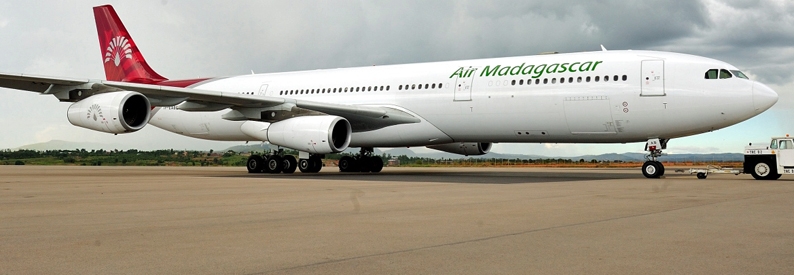
The sale marks the end of a turbulent chapter for Air Madagascar. Since December 2021, Madagascar Airlines has operated Air Madagascar and its subsidiary on domestic activity, Tsaradia, under a lease-management arrangement.
The transition was formalized when Madagascar Airlines received its AOC in April 2023.
Madagascar Airlines, established in April 2022 through the merger of Air Madagascar and Tsaradia, has outlined ambitious plans for fleet optimization. The airline is currently implementing the "Phoenix 2030" recovery plan, valued at $67 million.
Of this, $25 million has already been secured from the World Bank. Madagascar Airlines aims to achieve its first operational profits by the end of 2025 as part of its turnaround strategy.
Following the Jeju Air landing disaster, Muan International Airport was closed until January 19th for investigation and recovery. However, a decision was made to close the airport further until April, halting all operations at the airport. Unfortunately, a lone Boeing 737-800 got trapped at the airport until operations resume.
At 8:50 local time (KST) on December 29th 2024, a Boeing 737-800 landed at Muan International Airport in South Korea. The Boeing was operating as Jin Air Flight LJ748 flying from Taipei Taoyuan International Airport (TPE) in Taiwan.
The aircraft is registered as HL8012. Being a subsidiary of Korean Air, most of Jin Air's fleet previously operated for Korean Air. However, HL8012 is one of six aircraft that were delivered new to Jin Air. Having been delivered in July 2015, the plane is 9.5 years old.
The 737 had started operating from its new Muan base for just 4 days up to that point. According to FlightRadar24.com, the plane would fly roundtrip flights from Muan to Osaka, then Muan to Jeju, Muan to Tokyo/Narita, and finally Muan to Taipei as a cycle. However on December 28th, the day before the disaster at the airport, the flights to and from Jeju and Narita were severely delayed. This also caused the trip to Taipei to be delayed, and the plane ended up landing at Muan International Airport 4 hours behind schedule at 8:50 AM on December 29th. 13 minutes later, Jeju Air Flight 7C2216 crashed after it overran the runway.
After the crash of Jeju Air Flight 7C2216, the whole airport was closed for any flight activities, restricting takeoff and landing. This meant that the Jin Air Boeing 737, HL8012, would not be able to operate flights, nor even be able to leave the airport. Initially, the closure was set until January 7th, but was extended to January 19th. However, the Ministry of Land, Infrastructure and Transport announced on January 20th that the closure would be extended to April 18th.
The announcement came as the Black Box flight recorders were discovered to have been inoperative minutes before the crash. While the relations between the discovery and airport closures were not mentioned, it is highly speculated that the airport is closed for further investigation of the crash.
HL8012 is leased to Jin Air by its lessor, and monthly payments for the plane are estimated to be around $220,000 to $240,000. As the runway is estimated to be closed for 111 days since the incident, the approximate total loss for the inoperable 737 is calculated at around $814,000 and $888,122. Experts say that while the loss for Jin Air is significant, it would probably be hard for Jin Air to receive any sort of compensation from the government or Jeju Air regarding the incident.
HL8012 is currently parked at Muan International Airport at the time of writing.
""" },{ "title":"Learjet Crashes in Philadelphia Residential Area", "blurb":"On the evening of Friday, January 31st, a Learjet 55 crashed in a Philadelphia residential area just minutes after departure. ", "author":"Hadi Ahmad", "publishDate":"02/01/2025", "cover":"planecrash.jpeg", "views":890, "bodyHTML":"""As the American aviation industry continues to battle waves of emotions following the tragedy that took place in Washington D.C., another aviation disaster has occurred.
On the evening of Friday, January 31st, a Learjet 55 crashed in a Philadelphia residential area just minutes after departure.
According to Flightradar24, the aircraft involved was a 43-year-old Learjet 55 registered XA-UCI. The registration indicates this aircraft was registered in Mexico and was operated by Jet Rescue Air Ambulance.
The aircraft was flying from Philadelphia Northeast Airport (PNE) to Springfield-Branson Airport in Missouri (SGF). Onboard were four crewmembers and two passengers.
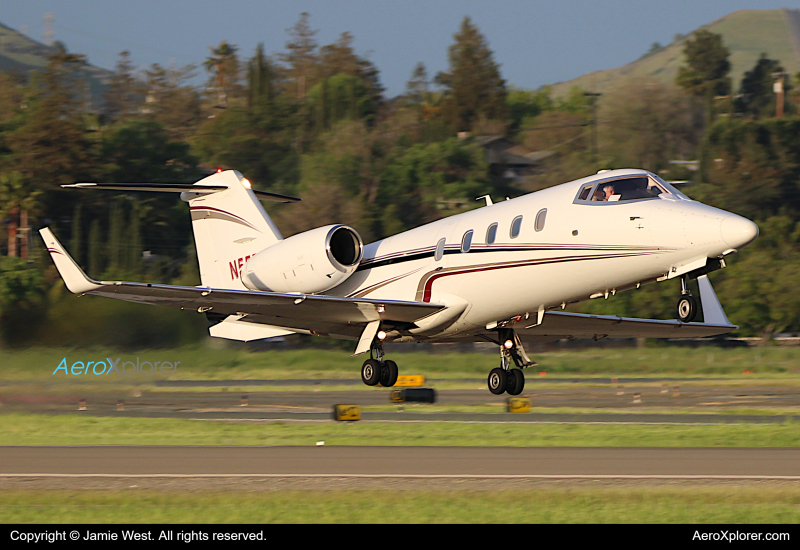
Given that Learjet was an air ambulance, it was serving exactly that purpose. One passenger was a pediatric patient, while the other passenger was their escort.
The incident occurred after 6:00 pm local time near Cottman and Bustleton Avenues right in the area of the Roosevelt Mall.
The aircraft crashed in a residential area. Many people on the ground have been reported to be injured and multiple homes are on fire.
Debris from the crash hit a diner in the area, flying through a window and hitting a customer in the head.
Cherelle Parker, Philadelphia's Mayor, commented that:
"As of right now, we have no reports on the number of fatalities, so right now, we're just asking for prayers for any and everyone who may have been affected."

A statement released by the National Transportation Safety Board (NTSB) noted that it was responding to the crash. This was alongside resources provided by Governor Josh Shapiro and the Commonwealth of Pennsylvania which included the Philadelphia Police and Fire Departments.
It has not been specified what caused the crash. However, Flightradar24 playback data indicates that the aircraft took off from PNE Airport around 6:06 pm local time and seconds after climbing to 1,650 feet, disappeared from radar.
President Donald Trump expressed his dismay for the incident and noted that first responders were well in action addressing the scene.
""" },{ "title":"JetBlue Launches ‘EvenMore,’ Offers New Premium Experience", "blurb":"On Tuesday, January 28th, JetBlue will begin offering its refreshed EvenMore premium travel experience. EvenMore passengers will be able to enjoy a wide range of new benefits on JetBlue flights, including complimentary alcoholic beverages, premium snacks, dedicated overhead bin space, and extra legroom seats. ", "author":"Jasper Yu-Dawidowicz", "publishDate":"01/29/2025", "cover":"TEB-l8uRAcSVZMAp1lrZDiDu.jpg", "views":2216, "bodyHTML":"""
On Tuesday, January 28th, JetBlue will begin offering its refreshed EvenMore premium travel experience. EvenMore passengers will be able to enjoy a wide range of new benefits on JetBlue flights, including complimentary alcoholic beverages, premium snacks, dedicated overhead bin space, and extra legroom seats.
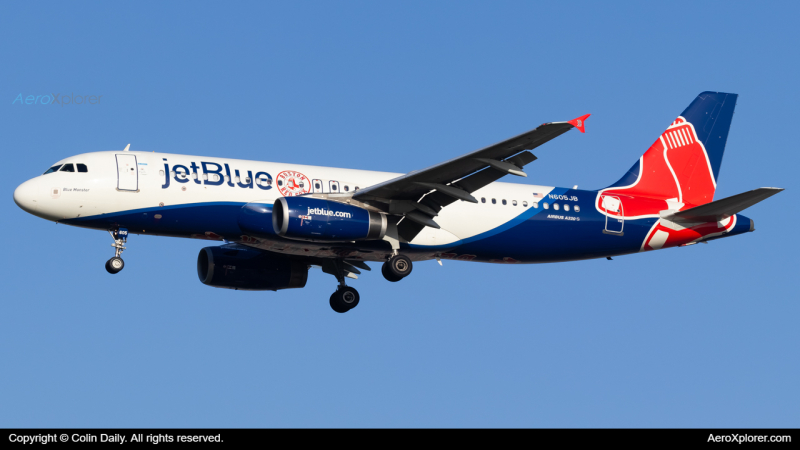
“It’s no secret that customers increasingly value unique experiences, so we’re bringing together great service and affordable fares into a competitive, elevated travel option,” said JetBlue president Marty St. George.
“Building on the success of Even More Space, the new EvenMore offers new amenities that our customers will love, in addition to the extra legroom they enjoy today.”
EvenMore is JetBlue’s take on an elevated premium economy offering and a spin-off of its current extra legroom product, “Even More Space.” Currently, JetBlue offers Even More Space seats on all aircraft. These seats feature up to seven additional inches of legroom, on top of JetBlue’s industry-leading legroom of 32.3 inches.
However, while Even More Space seats are spread between the first few rows and mid-aircraft exit rows, EvenMore will only be offered in the first few rows of each aircraft (or directly behind JetBlue’s Mint business class seats for aircraft that feature the product).
EvenMore will expand on the existing JetBlue experience, offering numerous perks and onboard amenities, including:
• Extra legroom
• Complimentary alcoholic beverages
• Premium snack options
• Priority security access
• Early boarding
• Dedicated overhead bin space
• Complimentary headphones
Passengers can expect to find the legroom in EvenMore the same as what is currently offered as part of the Even More Space product, up to seven inches of extra legroom. The existing Even More Space seats located mid-aircraft or in emergency exit rows will become “extra legroom” seats, offering customers additional space. However, the extra legroom will be the only upgrade over a traditional economy seat. Passengers can purchase extra legroom seats during the selection process, similar to how the carrier upsells seats in “preferred” locations, like window aisle seats.
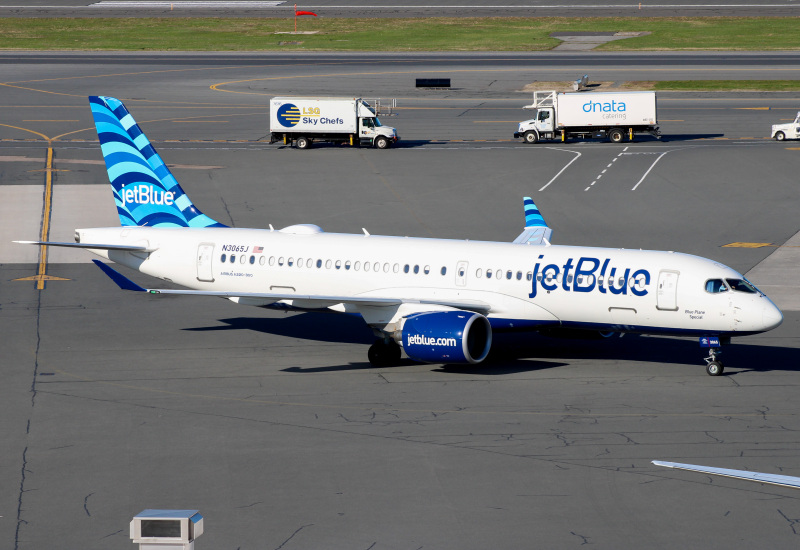
Customers flying in EvenMore will also receive up to three complimentary alcoholic beverages (on flights over 250 miles). Passengers 21 years or older will be able to choose between JetBlue’s offering of beer, seltzer, wine, liquor, and mixers.
In terms of food, JetBlue will not offer EvenMore customers complimentary snack boxes or meals. However, the airline is introducing a new premium snack option, Tiny Tate’s Chocolate Chip Cookies, for those flying in EvenMore. The cookies will be served alongside JetBlue’s existing economy snack options, including Popchips, plantain chips, graham cookies, and pretzels.
JetBlue is also incorporating valuable perks from the Even More Space product into the EvenMore experience, like priority security access (at select airports), early boarding, and dedicated overhead bin space. The carrier will also provide complimentary headphones to all EvenMore passengers upon request.
JetBlue Mosaic elite members can look forward to the EvenMore experience as part of their signature perks for 2025. Mosaic 1 members can select EvenMore at check-in for no additional cost and higher Mosaic elites, Mosaic 2, 3, and 4 members can book EvenMore at the time of booking for no extra charge.
In addition, JetBlue is offering all Mosaic members the opportunity to select extra legroom seats at no additional charge at the time of booking.
Qantas and South African Airways (SAA) have faced flight delays and cancellations on their routes between Australia and South Africa due to falling debris from SpaceX rockets. Elon Musk’s aerospace company uses the Southern Indian Ocean as a splashdown zone for returning space equipment, including rockets and satellites.
Ben Holland, head of Qantas’s operations center, told Reuters on January 14, 2025, that the debris can reenter within a “extensive area.” The decision to delay flights follows guidance from the U.S. government, he explained. “While we try to make any changes to our schedule in advance, the timing of recent launches have moved around at late notice which has meant we've had to delay some flights just prior to departure,” Holland stated.
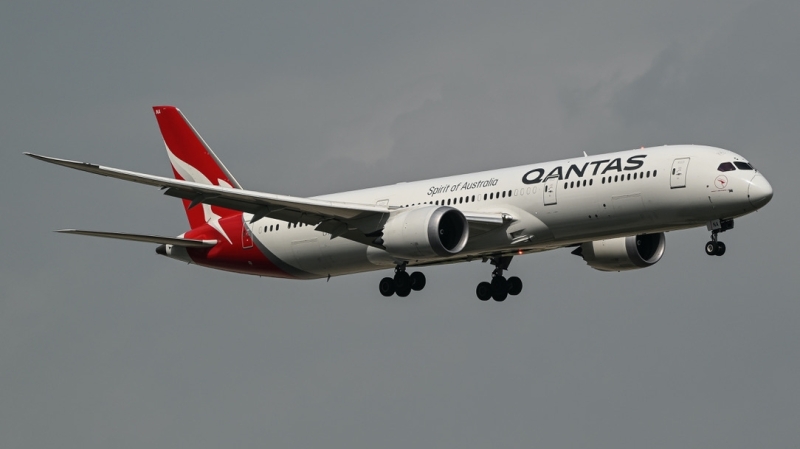
SpaceX chose the Southern Indian Ocean for its remoteness, but the frequent adjustments to launch schedules have disrupted airline operations. “We're in contact with SpaceX to see if they can refine the areas and time windows for the rocket re-entries to minimize future disruption,” added the Qantas official.
Currently, only three regular flight routes cross the Southern Indian Ocean. Air Mauritius’ Perth to Mauritius operates three times a week with Airbus A330neo aircraft. Qantas’ Sydney to Johannesburg operates six times a week with Airbus A380 aircraft. On September 30, 2024, Qantas upgraded its Sydney-Johannesburg route, replacing the Boeing 787-9 Dreamliner with the larger Airbus A380. The affected flight, QF63, typically departs Sydney at 9:30 a.m. and arrives in Johannesburg at 2:45 p.m. on the same day, with a flight time of approximately 13 hours and 45 minutes.
Looking ahead, Qantas plans to reintroduce its Perth-Johannesburg route by mid-2025, pending approval from Western Australian border authorities. This move aims to challenge the current monopoly held by SAA, which has increased its service on the route from three to four weekly flights starting December 7, 2024, and further to five weekly flights from January 6, 2025.
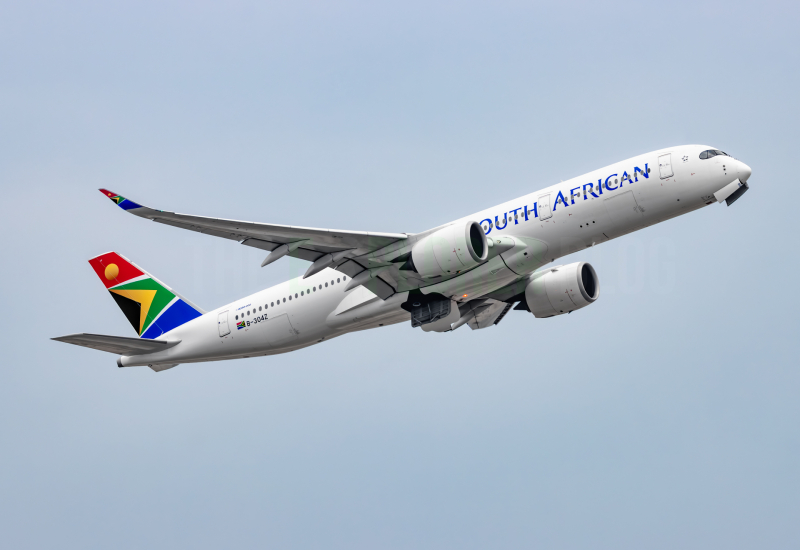
SAA’s Perth to Johannesburg, operating five times a week with Airbus A340-300 aircraft, has similarly experienced disruptions due to SpaceX rocket reentries, reports The Guardian. However, no more details have been provided. These flights follow a similar path to Qantas’s Sydney-Johannesburg route, with last-minute schedule changes becoming increasingly common.
SpaceX, officially known as Space Exploration Technologies Corp., is a private aerospace manufacturer and space transport services company founded by Elon Musk. The company, which also operates Tesla (TSLA), has revolutionized the space industry but faces growing scrutiny over the impact of its operations on global aviation.
""" },{ "title":"Jeju Air Black Box Flight Recorders Failed Minutes Before South Korean Plane Crash", "blurb":"The black boxes of the Jeju Air Boeing 737-800 aircraft that crashed several weeks ago in Muan, South Korea, stopped working during the last four minutes of the flight. The crash killed 179 of the 181 people onboard. Without the flight data and cockpit voice recorders, investigators now face a significant setback as they lack crucial information that promised to shed light on the incident. ", "author":"Jasper Yu-Dawidowicz", "publishDate":"01/16/2025", "cover":"C4JICJjsQhgCGv5iXT39.jpg", "views":3427, "bodyHTML":"""The black boxes of the Jeju Air Boeing 737-800 aircraft that crashed several weeks ago in Muan, South Korea, stopped working during the last four minutes of the flight. The crash killed 179 of the 181 people onboard.
Without the flight data and cockpit voice recorders, investigators now face a significant setback as they lack crucial information that promised to shed light on the incident.
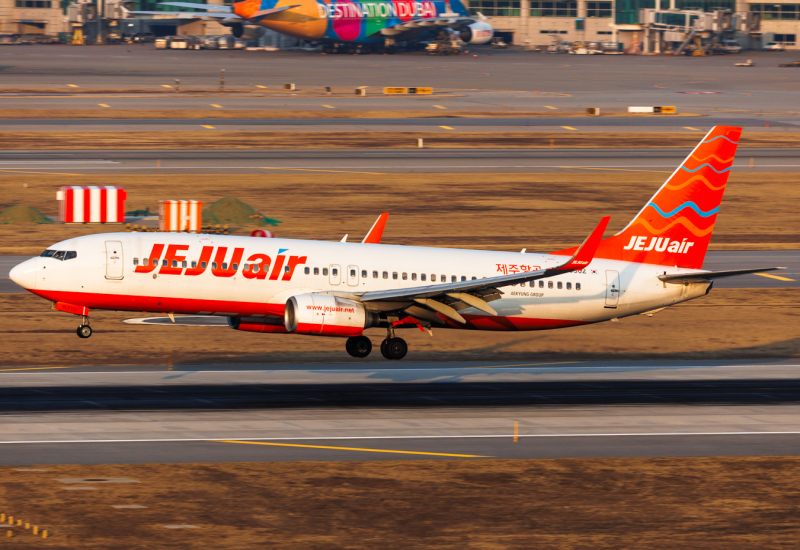
On Saturday, the South Korean Transport Ministry announced that the two black boxes, including the flight data and cockpit voice recorders, from Jeju Air Flight 2216 stopped recording four minutes before the fatal accident. Previously, investigators had said that the data contained inside the black boxes were key to determining the cause of the deadly crash.
These data recorders capture the aircraft’s movements, which could have helped to explain the teardrop maneuver and eventual belly landing, as well as the dialogue between pilots, which would have allowed investigators to understand the decisions made leading up to the deadly landing attempt.
After the crash, South Korean officials analyzed the black boxes before sending them to the United States National Transportation Safety Board (NTSB) for further review. However, the NTSB confirmed what South Korean investigators already suspected: that some data was missing from the recorders.
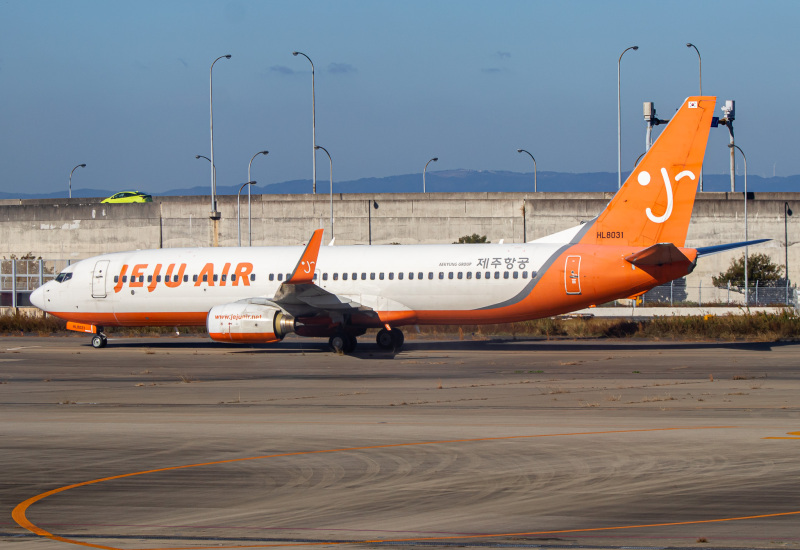
“Data from the CVR (cockpit voice recorder) and FDR (flight data recorder) are crucial in investigating accidents, but such investigations are conducted through the examination and analysis of various sources of information, and we plan to do our utmost to determine the cause of the accident,” the South Korean ministry said in a statement.
However, while the missing black boxes pose a major setback to the investigation, they may give investigators new insight into what happened following the bird strike.
Around the time the data recorders failed, the pilots told air traffic controllers that they had suffered a bird strike, subsequently declaring an emergency. Since the flight data and voice recorders both failed directly following the bird strike, it suggests that all power systems failed, including the backup power systems that the black boxes rely on in the event of a power loss onboard the aircraft.
If the aircraft did lose all power, it could explain part of the decision to “teardrop” back to the airport and land on the runway in the opposite direction. It could also possibly explain the failure of the landing gear and deployment of spoilers, which slow an aircraft down after landing.
""" }]